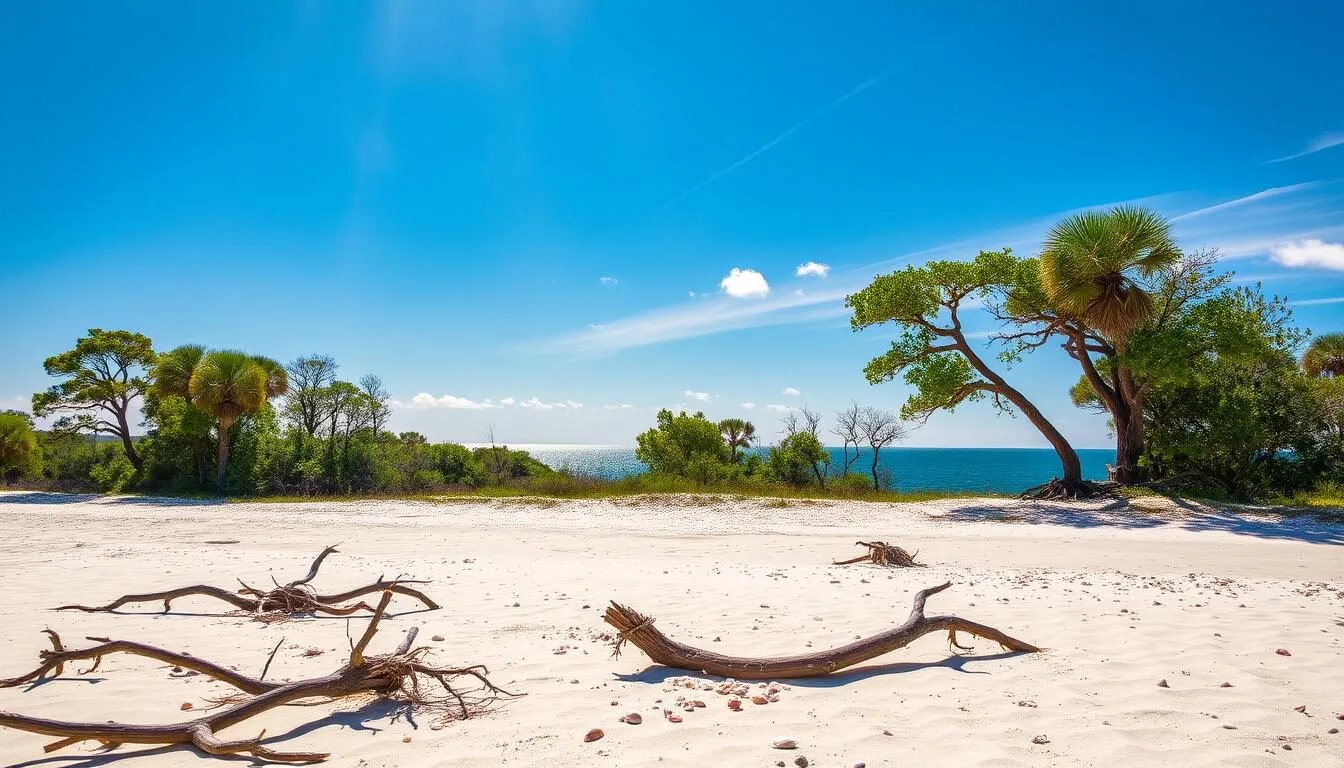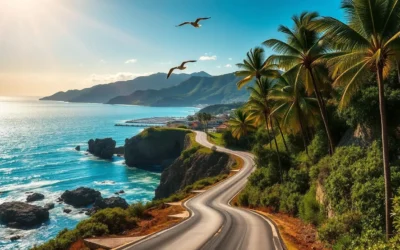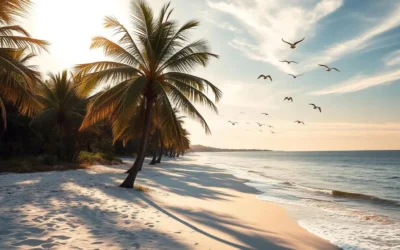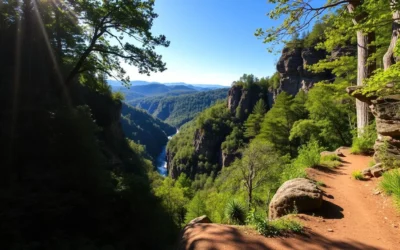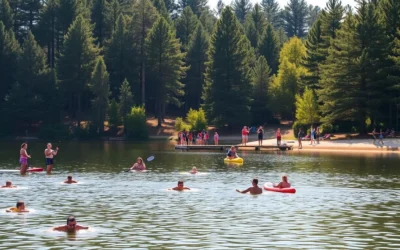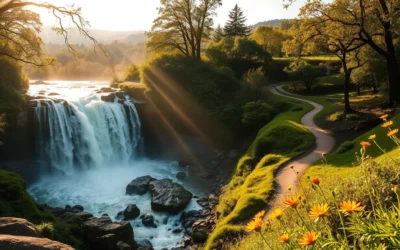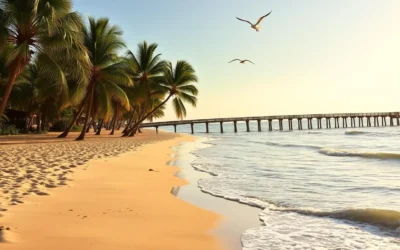✓ Accommodations✓ Flights✓ Rental Cars
Did you know that only about 2,000 visitors are allowed to step foot on Ossabaw Island each year? This pristine barrier island off the coast of Georgia is a true treasure, offering an unspoiled glimpse into the region’s natural and cultural heritage.
As a designated “Heritage Preserve,” Ossabaw Island is protected by the state of Georgia and co-managed by the Department of Natural Resources and the Ossabaw Island Foundation. To experience this untouched coastal wilderness, you’ll need to be accompanied by a representative from one of these organizations on your trip.
With its maritime forests draped in Spanish moss and historic structures dating back centuries, Ossabaw is a paradise for those interested in wildlife viewing, beach exploration, or historical discovery. This article will guide you through the best experiences Ossabaw Island has to offer, helping you plan a memorable trip to one of Georgia’s most exclusive coastal treasures.
Discovering Ossabaw Island: Georgia’s Hidden Coastal Gem
Georgia’s Ossabaw Island is a remarkable example of a preserved barrier island, rich in both ecological and cultural heritage. This unspoiled island offers a unique blend of natural beauty and historical significance, making it an ideal destination for those seeking an authentic coastal experience.
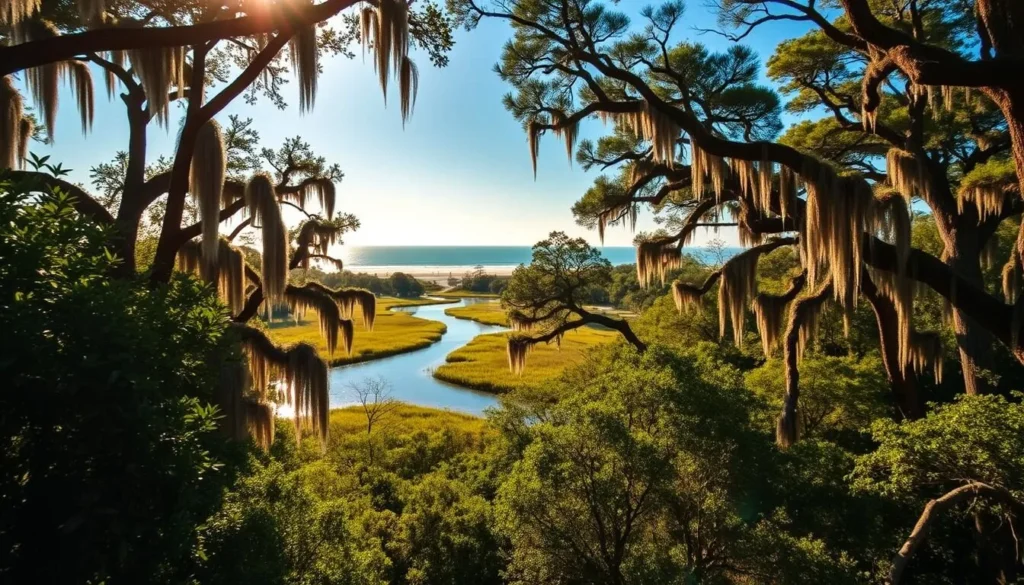
What Makes Ossabaw Island Special
Ossabaw Island stands out due to its limited development and careful management by the Department of Natural Resources and the Ossabaw Island Foundation. Thanks to the foresight of Mrs. Sandy West, the island is primarily used for research and cultural studies, including day trips and overnight retreats with historic, educational, or cultural components.
The island’s caretakers have hosted a variety of groups, from church organizations to scientific research teams. This approach has maintained the island’s pristine condition, allowing visitors to experience its natural beauty much as it has been for centuries.
The Heritage Preserve Status
The Heritage Preserve status of Ossabaw Island ensures its protection for future generations. This designation maintains the delicate balance of the island’s diverse ecosystems and historical sites, making it a place of significant cultural and ecological importance in the state of Georgia.
By preserving Ossabaw Island, the Department of Natural Resources and the Ossabaw Island Foundation have created a living laboratory for scientists, artists, and historians. This preservation effort has been instrumental in protecting the island’s natural resources and providing a unique opportunity for educational and cultural enrichment.
How to Access Ossabaw Island
Ossabaw Island, a hidden gem on Georgia’s coast, is accessible only by boat. The island’s unique accessibility is part of its charm, offering a serene and peaceful experience for its visitors.
Boat Transportation Options
The journey to Ossabaw Island is a relaxing 20 to 30-minute pontoon boat ride from Skidaway Island. You can arrange your boat transportation through approved operators familiar with the waters surrounding Ossabaw, ensuring a safe and enjoyable trip.
To plan your visit, you must book through either the Department of Natural Resources (DNR) or The Ossabaw Island Foundation (TOIF), as independent access is not permitted. The Ossabaw Island Foundation website is your primary resource for booking trips, offering options from day visits to overnight educational retreats.
Visitor Restrictions and Requirements
Visitor restrictions are in place to protect Ossabaw Island’s delicate ecosystem. All guests must have an educational, research, or cultural purpose for their visit. Group sizes are kept small to maintain the island’s peaceful atmosphere and minimize environmental impact.
When planning your trip, be prepared to provide details about your visit’s purpose and follow all guidelines established to preserve this special place. By doing so, you’ll contribute to the conservation of Ossabaw Island’s natural beauty and rich cultural heritage.
Exploring the Natural Beauty of Ossabaw
As you step onto Ossabaw Island, you’re immediately enveloped in its natural beauty. The island is a haven for nature lovers and those seeking to escape the hustle and bustle of daily life. With its diverse landscapes, Ossabaw Island offers a unique experience that showcases the best of Georgia’s coast.
Maritime Forests and Spanish Moss
The maritime forest on Ossabaw Island is a breathtaking sight, with ancient live oak trees draped in flowing Spanish moss, creating cathedral-like canopies above the forest floor. The forest floor is covered by bright green sawtooth palms, while pine trees, magnolias, and old oaks stand tall, forming a diverse ecosystem. The Department of Natural Resources allows nature to take its course here, so fallen trees remain where they land, unless they block access, creating microhabitats for moss, fungi, and small wildlife.

The maritime forest is a true marvel, with its island dominated landscape and the majestic trees that have stood for centuries. As you explore this enchanting landscape, you’ll discover the beauty of nature in its purest form.
Pristine Beaches and Coastal Landscapes
Ossabaw Island’s beaches offer a stark contrast to the forest interior, with wide expanses of sand meeting the Atlantic Ocean in an unspoiled coastal landscape. Unlike more developed barrier islands along the Georgia coast, Ossabaw’s beaches remain free from commercial development, preserving their natural state for wildlife and limited human visitors.
The interplay between the maritime forest, salt marsh, and beach environments creates a complete barrier island ecosystem that scientists value for research and education. As you explore these natural areas, you’ll experience the island much as it appeared centuries ago, with minimal human intervention shaping the landscape.
Historical Sites and Cultural Significance
As you explore Ossabaw Island, you’ll uncover a rich tapestry of historical sites that reveal its cultural significance. The island’s history is deeply intertwined with its natural beauty, making it a unique destination for those interested in both.
The Historic Club House
The Historic Club House on Ossabaw Island is a charming two-story wooden structure that serves as the island’s welcoming center. Its wraparound porch, lined with rocking chairs, invites you to sit and relax while absorbing the peaceful atmosphere. The Club House maintains its historic character while providing modern meeting spaces for educational groups and visitors. It’s a place where you can glimpse into the island’s past and understand its cultural significance.

Tabby Slave Cabins and North End Plantation
The North End Plantation area of Ossabaw Island contains three rare tabby slave cabins, some of the few remaining original slave quarters in Georgia. These structures, built by enslaved people using a mixture of oyster shells, lime, sand, and water, offer insights into the construction techniques and living conditions of the time. The Ossabaw Island Foundation provides educational programs about these historical sites, helping visitors understand their cultural significance within the broader context of coastal Georgia and South Carolina Lowcountry history.
Planning Your Visit to Ossabaw Island
With its rich history and natural beauty, Ossabaw Island is a must-visit for anyone interested in Georgia’s coast. To plan your trip, start by exploring the Ossabaw Island Foundation website, which offers comprehensive information on available trips throughout the year.
You can participate in various specialized trips, including sea turtle nesting observation during summer and historical tours of the island’s significant sites. Consider the time of year for your visit, as each season offers unique experiences. If you’re looking for alternative coastal experiences, consider Tybee Island or other protected islands along Georgia’s coast.
To support conservation efforts, sign up for newsletters from organizations like One Hundred Miles and The Georgia Conservancy. Remember to pack appropriately and express your thanks to the guides who make these trips possible.
—
The above is subject to change.
Check back often to TRAVEL.COM for the latest travel tips and deals.
